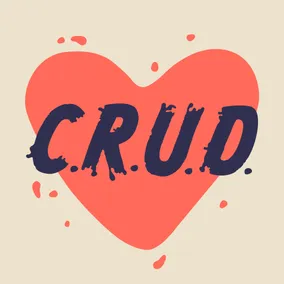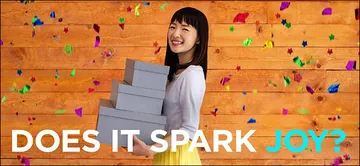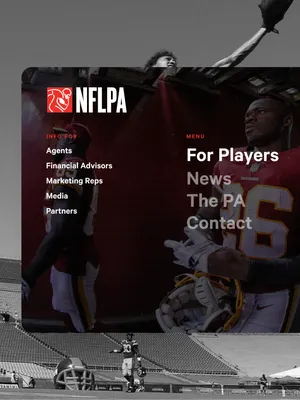All You Need Is C.R.U.D.

Becky Radnaev, Former Content Strategist
Article Category:
Posted on
Content hoarding is a real problem for most businesses. Take a strategic approach to clearing out your website's closet and ensure your content supports your organizational goals.
When Marie Kondo opened a new online shop selling precisely the kind of items her movement had inspired us to throw out (hello, $275 brass tool holder), the internet responded with derision. How dare the Japanese minimalism guru make money out of offering us yet more objects to clutter up our homes and lives? What had happened to surrounding ourselves only with belongings that “spark joy?”

KonMari’s store claims it’s only selling products that are genuinely loved by a woman of expensive taste: Marie Kondo herself (hello, $180 cheese knife). This prompted me to think about how highly subjective our relationship with “things” is, and how complicated these relationships become when more than one person has a stake in the same object.
Take a website, for example. Even with a dedicated product owner, rarely is what you see on a website the preserve of just one person. Websites are made up of content -- stuff that’s been placed there for a purpose -- and that content is usually produced by not one but several people, even several groups of people. How those people relate to the content that’s on their site -- well, it’s complicated.
Enter: your messy closet
Websites, like closets, have a tendency to become cluttered with things that fail to spark joy for just about anyone. A website burdened with old, stale, low quality content dilutes its own value, undermines the brand it represents, fails to speak to users, and likely doesn’t do much to improve a company’s bottom line. Since content for larger organizations is often produced in a distributed way, and sometimes without any quality control gatekeepers, the end result can be a lack of cohesion and consistency in presentation, voice, tone, and substance.
Humans want to hold on to things just in case some unlikely scenario arises in which they will be needed again, so it’s hard to purge our wardrobes of misshapen sweaters or throw out the cables for obsolete appliances. It’s that much harder again to discard half of the content on our website, content that has been produced collaboratively and effortfully over many years. Sometimes the effort we’ve put in is greater than it should be. When we hoard, we can’t keep tabs on everything we own. This often results in waste -- going out and buying something we already have because we can’t find the original. Or making content all over again because no one knows where the first instance of it is.
Many, many organizations, large and small, should be thinking long and hard about their content hoarding habits. As KonMari says, "There are three approaches we can take toward our possessions: face them now, face them sometime, or avoid them until the day we die". (Possibly from drowning in a sea of our accumulated objects.) Just as it’s impossible to find anything in an overstuffed closet, your out-of-control content is tripping up your users as they try to achieve their goals.
Oftentimes, the idea of decluttering existing content only comes up within the context of a website redesign. While that is indeed a perfect moment to evaluate the lie of the land, there’s no need to wait. It’s never too early to be thinking about whether your content is truly serving your audience and your business goals. Ideally, that strategic thinking should underpin the content creation process itself.
The question is, how do you tell whether your content is effective? And, if it isn’t, what do you do to improve it?
Enter: the content audit
The only way to have a real handle on the state of your website content is to read it. All of it. Page by page. It’s not quick or sexy, but it’s the only way. Let’s get started.
You will need a dedicated content audit spreadsheet (we use Airtable). As well as containing the URLs for all the website pages, procured by a site crawl, your spreadsheet should map out content attributes that include but are not limited to:

- Page Title
- Pageviews over the last year
- Content Type/Format
- Target Audience
- Topic
- Location
- Date of last update
You can build up a picture of your content’s popularity via pageviews, but it’s only a partial one. High quality content might be buried or obfuscated by your website’s navigation, meaning it isn’t getting the attention it deserves. That’s why it’s important for you to also do a qualitative evaluation of all your content, which entails objectively analyzing how good it is.
This is difficult. It’s especially difficult to be objective if you or your team created the content in the first place. Of course you don’t want to let go of something it took you days or weeks to write. Bringing in an external content strategist with an unbiased perspective will help. As will a content strategy for your website, which will empower you to make consistent decisions about your content.

NFL Players Association
View our workEnter: your content strategy
Get ready for a whole pile of strategy.
Your core website strategy is a guiding statement (or possibly several, for particularly complex sites) that encapsulates what your website is going to do, and how it’s going to do it. An example might be: “Our website will demonstrate our leadership in solving climate change by highlighting our impact, innovation, and expertise to government staff, funders, and volunteers.” Your core website strategy should be built on top of your brand strategy, since your site is one expression of your brand that enables your audience to interact with you.
Your brand strategy is much broader than just your website or its content: it’s that central thesis that articulates who you are as an organization, what you do, and why. Knowing what your brand stands for and the values that are fundamental to its existence is vital -- otherwise how can your website be expected to reflect them?
Applying your brand strategy to your website through your content work is your content strategy. For now, we are focusing on the strategic auditing of your web content, but it’s important to know that content strategy touches many other areas of content production and maintenance, and many communication channels beyond your website. All of these areas require a strategic approach to make your content as effective as it can be.
Enter: the bad guy
Let’s return to our core website strategy: “Our website will demonstrate our leadership in solving climate change by highlighting our impact, innovation, and expertise to government staff, funders, and volunteers.”
Everyone who works on the website should refer to this statement when auditing content -- and, from now on, when creating it too. If a piece of content doesn’t support the objective of demonstrating leadership, then it needs to be rewritten or deleted. If a piece of content does not clearly communicate impact, innovation, or expertise (or all three) to your highest priority audiences, then it needs to be rewritten or deleted. If a proposed piece of content doesn’t serve this website strategy, don’t make it!
Looking at content through the lens of your core website strategy is freeing. While the strategy itself will always be subject to some degree of subjective interpretation and negotiation, it arms you with a clearly-stated goal for your content. And it outsources friction. Let the strategy be the bad guy. Let it decide what goes on your site, rather than internal politics, persuasive stakeholders, ill-defined production processes, or inertia.
Enter: C.R.U.D.
You’ve got your spreadsheet of pages, and you’ve got your core website strategy. Next you need a process, and that’s where C.R.U.D. comes in. It’s a term appropriated from software development, and in this context the acronym stands for Create, Reuse, Update, and Delete.
C.R.U.D. is a three step process. Along the way, you’ll be tagging all of your content with an action that determines its fate.

1. The first step is to evaluate the baseline quality of the content, thinking about it in terms of your core website strategy (that helpful guiding statement again). Is it relevant to your priority audiences? Does it uphold the communication goals you’ve laid out?
If no, mark it Delete. If yes, proceed to the next step.
2. Next you’ll do a brand evaluation and ask, is the content brand-compliant? Are the voice and tone true to your organization’s values?
If no, mark it Update. This content needs to be repositioned to be strategically valuable -- so you’ll need to rewrite it. If yes, proceed to the next step.
3. Finally, you’ll look at the content’s structure. Is it optimized for the web? Is it a single discrete topic of the right depth for a page? Is it accessible?
If it passes this test, mark it Reuse. Or, if it’s good quality, brand compliant content that’s not scannable or consumable on a mobile device, you’ll need to Update it.
In doing the evaluation, you may also discover gaps in your content. Start making a Create punch list with ideas that will allow you to fill those holes.
Now the real work begins
Congratulations, you’ve completed C.R.U.D. Three challenges lie ahead: actually hitting the big fat delete button on that content you know is no longer serving you, reworking the content that has the potential to be great, but needs a facelift, and making new, high quality stuff that’s going to support your core website strategy. (A challenge that never goes away.)
Content auditing -- like closet reorganization -- is not for the faint of heart. Who knows what you might unearth in there, and how much of a tussle it will be to part with. But, to quote another Japanese minimalism principle, “The best way to find out what we really need is to get rid of what we don't.”